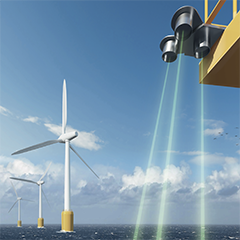It could meet Europe’s electricity demand seven times over, and the United States’ electricity demand four times over. In the last decade, offshore wind power has developed from an expensive rookie to a competitive source of energy. As the world’s interest in offshore wind grows, there is a rapidly growing need for cost-effective solutions. But as always, there are some major challenges.
Traditionally, offshore wind has been focusing on bottom-fixed parks due to the proven design, the shallow waters and the easy accessibility. However, most other potential areas have much deeper nearshore waters which are not suitable for bottom-fixed turbines. The challenge lies in making these areas accessible for offshore wind. Floating wind technology enables wind turbine installation in deeper waters not suitable for bottom-fixed turbines. As the name implies, a floating wind turbine is not permanently fixed to the seabed but floats. It’s kept in position by a mooring system.
As the offshore renewable energy sector grows, efforts to develop the technology needed for the floating wind market are also increasing in scale and scope. Most of the commercial floating wind farms are still in the development phase. The main aim is to analyze the behavior of the assets under real operational and extreme conditions and gain real-life knowledge from the construction, operation, and maintenance of the unit. The collection of data is key in this process.
Why is wave data important?



























